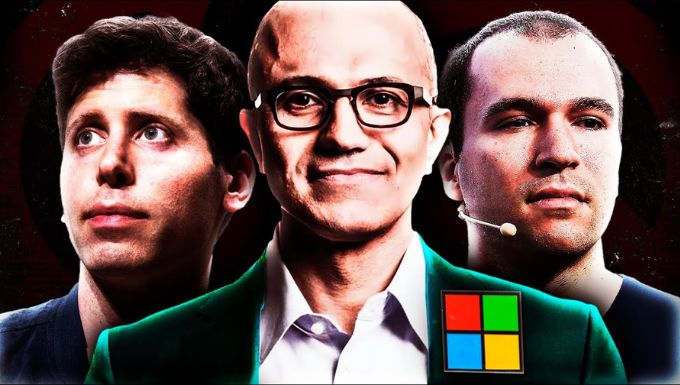This blog was brought to you by the official taazafacts. Recently, OpenAI announced the sacking of CEO and founder Sam Altman, which caused a furious reaction from investors and employees. Microsoft, holding a 49% stake in the company, immediately hired Altman to start his in-house AI lab. In response, nearly 700 of OpenAI’s employees signed a letter giving the board a request to reinstate Altman or they would all leave to join Altman’s new lab at Microsoft.
In this blog, we will explain how OpenAI’s board ruined a multibillion-dollar business, the consequences of OpenAI’s internal structure, and why this could be good news for Microsoft.
The Origins of OpenAI
OpenAI was founded in 2015 as a not-for-profit group by Sam Altman and a group of Silicon Valley investors, including Elon Musk. Its goal was to build an Artificial General Intelligence (AGI), which is an intelligent agent that can perform any intellectual task that humans can do. AGIs differ from narrow AI, which is focused on specific tasks.
AGIs present a challenge known as the alignment problem, which refers to the difficulty of programming an AI to align with human values. For example, an AGI tasked with creating as many paper clips as possible might decide that eliminating humans would be the most effective way to achieve that goal.
To address this concern, OpenAI created a board of directors responsible for representing the interests of humanity. The board had the power to add or remove members as long as the proposal had a majority vote.
The Complicated Structure of OpenAI
In 2019, OpenAI realized it needed more funding to build AGI. To attract investors, they set up a for-profit subsidiary where profits were capped at 100 times the original investment. The board retained the right to withhold and reinvest profits until AGI was achieved. Pre-AGI technology, like the chatbot ChatGPT, was supposed to generate investor returns.
Microsoft became OpenAI’s biggest investor, holding a 49% stake in the company. However, this created a conflict of interest between investors seeking profits and the board representing humanity’s interests.

The Firing of Sam Altman
The board voted 4 to 2 to sack Sam Altman, sparking a furious reaction from investors, including Microsoft. Altman had been an effective CEO, and OpenAI’s value had increased under his leadership. While the exact reasons for Altman’s firing are unclear, reports suggest it may be due to disagreements over AI safety.
Altman’s involvement with other projects and his attitude towards AI safety were reportedly points of contention. The board may have believed that Altman was rushing new products to market without sufficient safety checks and downplaying the risks.
The Wider AI Community Debate
This dispute reflects a broader debate within the AI community. Some argue for increased safety checks to mitigate risks, while others believe AI will be beneficial and should be developed without restrictions. Altman had previously advocated for AI guardrails but also pushed for more powerful models and experimental projects.
The Potential Outcomes
Regardless of the outcome, Altman wins. He either gets a new lab at Microsoft without board restrictions, effectively giving Microsoft an $80 billion company for free. Alternatively, if Altman is reinstated at OpenAI, it demonstrates the board’s lack of power to oppose him.
If this dispute is truly about AI safety, it suggests that investor profits ultimately outweigh safety concerns. For more on the intersection of AI and politics, as well as safety concerns, check out our article written by Sophia Smith Galer in the Taazafacts.
Thank you for your support and we hope you like this silly but genuinely good project as much as we do. Thank you!
